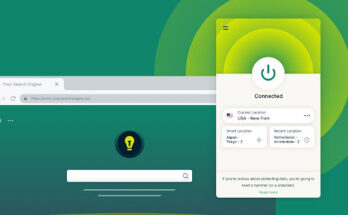The following experts weigh in on how professors and students will be affected by the abrupt, compulsory adoption of technology-delivered instruction.
Bryan Alexander
He is an author, futurist, and educator. These are his concerns about remote learning.
Much is dependent on how the pandemic unfolds.
If countries like the United States can burn through all of the worst of COVID-19 in a matter of months, as China did, the consequences will be severe but short-lived. If the coronavirus and our response last a year or longer, academia will be reshaped.
I am concerned that many of the financial expenditures will engulf our budgets as state appropriations to public schools continue to decline, as campus costs rise, international enrollment declines, endowments dwindle, and families cannot afford to pay more on education. All of this takes place in a short-term setting. COVID-19 will devastate higher education’s budget if it gnaws on countries for several semesters. Given the institution’s previous history, we might anticipate further adjunctification of faculty and “queen sacrifice” program cuts (especially the humanities).
Our online shift could take a variety of forms. First, if bad-experience reports spread and gain traction, we may see a drop in involvement and possibly enrollment. Second, given the severity of equity challenges exacerbated by the crisis, open educational resources and open-access publications may emerge victorious. We may see inequality drive different technology uses, with wealthier communities opting for more demanding technologies (virtual and mixed reality, telepresence). In comparison, poorer communities opt for less demanding tools (asynchronous video, audio, images and text).
Third, as the trend toward totally online pedagogy continues, specific pedagogies and support structures should gain traction. Colleges and universities may compete for students (as well as teachers and staff) based on how well, and conspicuously specific instructional approaches are implemented. Fourth, if the pandemic continues to come and go in waves throughout time, we may become accustomed to switching between face-to-face (i.e., genuinely blended) and entirely online instruction.
Maha Bali
Maha Bali is a professor of practice (an associate professor) at American University in Cairo’s Center for Learning and Teaching. This is what she says:
Because I am both a faculty developer and a teacher, the impact on me has been twofold: first, as someone who assists others in their teaching, and second, as a teacher. Some of the key issues I believe people have been grappling with are supporting each other through this challenging crisis, maintaining rigour, and ensuring student learning outcomes are met. My priorities in terms of teaching have evolved. Rather than thinking about how to convert what I’m doing to an online format (which is simple for me as an eLearning expert), it’s about adjusting my course to meet the needs of students at this point in history.
Moving online with fairness in mind and attempting to lessen student fear were two critical things I felt my institution strived to emphasize. For instance, we recommend that faculty should not rely much on synchronous videoconferencing so that students with poor internet infrastructure, who use a shared device at home, or other family members who require internet bandwidth for other purposes are not disadvantaged. Faculty have been asked not to conduct any exams for the next two weeks, which I believe will comfort many students.
My department has been mainly concerned with assisting faculty in making the best decisions for their teaching philosophy and learning objectives, so we’ve been working hard to provide options such as conducting a seminar-style class online without synchronous video. I believe my department has shown concern for professors to assist them in their preparation, and I hope this concern will be passed on to students. I see this strong ethic of compassion for students and their well-being in talks with our instructors.
Finding a method to stay connected with students while preserving a work-life balance, I believe, will be difficult for professors who aren’t acclimated to live online.
Providing fair access to students will necessitate more flexibility than we anticipate in terms of everything from attendance to deadlines to communication modes. It’s not just about communication here; it’s also about affect, which is more important than ever when we’re told to use social distancing techniques.
But, for the first time, quite a large number of people from all over the world are going through similar experiences in different situations and learning from one another. I’ve witnessed so much sharing across the globe and across institutions that I believe new friendships and solidarity will endure.
My students participate in a Virtual Exchange activity every semester, and I am on the board of a project called Erasmus+ Virtual Exchange. This semester, I expect the experience to be richer than usual because everyone on the planet will have similar things to talk about.
Robin DeRosa
She is the Plymouth State University’s Open Learning & Teaching Collaborative’s director. This is what she had to say:
On proportionate responses, everyone is usually a couple of several weeks behind. When it became evident that we’d all have to switch to online learning, there was a misconception that this meant creating online courses the same way we did during regular times. People are starting to realize that the situation is far from ordinary. Many of our students lost their jobs and salaries immediately, plunging them into destitution. Many of them and some of our teaching lecturers do not have access to Wi-Fi.
As more students, instructors, and staff become ill, our plans will undoubtedly be thrown off again. I believe that the best practice for this is that there isn’t one yet, and we all must remain flexible and listen to the human people in our colleges when they tell us what they need to learn and, more crucially, to survive.


